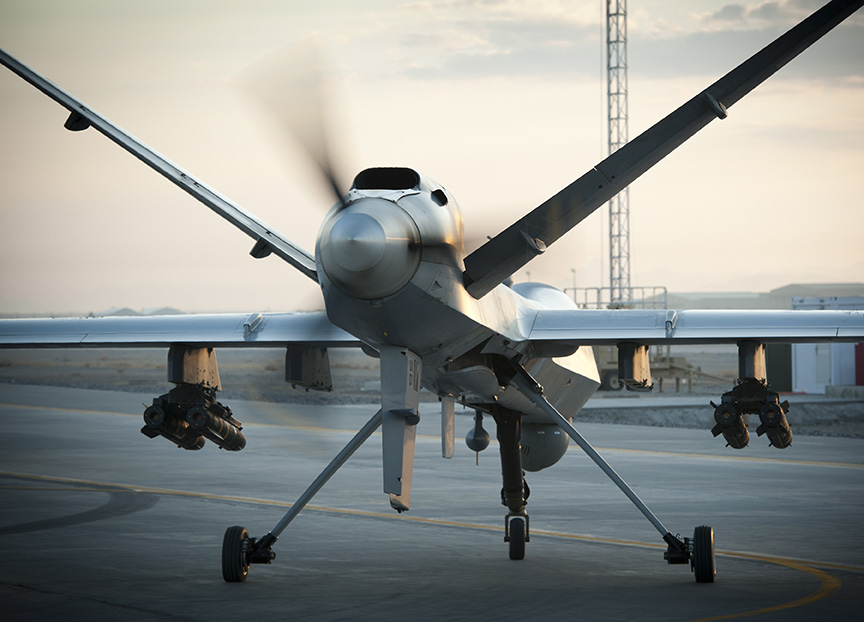Cranfield Airport selected for trial area to advance UAS integration
Cranfield Airport has been selected by the Civil Aviation Authority to participate in a Temporary Reserved Area (TRA) Regulatory Sandbox accommodating the operation of unmanned and manned aircraft in unsegregated airspace.
The TRA designation will enable Cranfield Airport to host projects and trials that will help to integrate unmanned aircraft such as drones into shared airspace. With estimates that the increased use of drones could contribute £45 billion to the UK economy by 2030, their use is expected to expand rapidly in the coming years. Developing the technical capacity and expertise to operate them safely alongside other aircraft is key.
The TRA Sandbox forms part of the Airspace Modernisation Strategy which outlines a roadmap for the development and modernisation of UK airspace. The Cranfield Airport TRA is agnostic to technology, agnostic to market definitions and will facilitate an open access trials' environment managed by Cranfield’s Air Traffic Control as the Air Navigation Service Provider.
Sandbox vital to unlock potential of drones
The new TRA will allow the airport to host projects that demonstrate and validate technologies, airspace management procedures and flight operation procedures that support the safe, efficient and managed integration of drone operations and crewed aircraft. Live testing of operations and technologies will provide safety mitigation evidence and help to establish standards, enabling the CAA to develop regulatory guidance in this crucial area.
Cranfield Airport has experience and expertise within its Air Traffic Control of enabling UAS activity with navigation and other projects.
Airport Operations Director Rob Abbott said:
“The airspace of the future will be increasingly complex. The TRA Sandbox is a clear indication of the CAA’s support for innovation and seeks to address the need to progress adoption of manned and unmanned aircraft in UK Airspace. I’m pleased that Cranfield Airport with this TRA Sandbox will host more groundbreaking projects and trials to improve industry knowledge, processes and systems. This is vital to unlocking the potential of commercial drone use, and safely bringing UAS aircraft into shared airspace.”

Industry partners will use TRA to develop commercial drone use
Working with advice and guidance from the CAA, Cranfield Airport already expects several consortiums and industry partners to use the TRA including Project Blueprint, Thales, Saab and HeroTech8.
Rob Abbott continued,
“The approach we are taking to integrate, based on established ATS services, builds on years of experience at Cranfield. Cranfield’s Global Research Airport, operated by one of the world’s leading universities in aviation, is uniquely able to bring together the airport, air traffic control and operations for truly collaborative research and development.”
Neil Watson, Business Development Manager Airspace Mobility Solutions at Thales, said:
“Thales is delighted to continue its long-standing relationship with Cranfield as an integral part of the UAS Temporary Reserved Airspace (TRA) Sandbox activities. We recognise the importance of the TRA as an important part of the roadmap to accommodate safe UAS BVLOS operations in a step-wise manner as set out in the UK Airspace Modernisation Strategy (AMS). The ability to operate drones and manage operationally representative airspace will enable technological, regulatory, societal and economic aspects of commercial drone operations to be better understood within the context of user driven use cases."
Per Ahl, Vice President and Head of Marketing & Sales at Saab’s business area Surveillance, said:
“Saab is excited by this news of the TRA, given our existing digital tower system at Cranfield as well as our installed research tower system, to further advance UAS integration.
“This is an important first step towards validating an integrated concept of combined drone- and aircraft operations at or around an airport. Combining these new technologies with operational procedures will give valuable insights which will support the adaptation and development of new functionality for drone operations, as well as traditional airspace services for our digital tower solution.”
Project Blueprint aims to create a ‘blueprint’ for the UK-wide rollout of drone operations which can be commercialised at scale. It will be using the TRA Sandbox to create a beyond visual line of sight test environment, with a low-cost ground-based test and avoid network.
Professor Sir Iain Gray, Cranfield University’s Director of Aerospace, is Chair of the Drone Industry Action Group and says:
“The UK can be a global player in drone services and solutions and help to set the global standards and frameworks for us to reap longer term mobility and commercial benefits. To achieve this potential its essential we have these test environments to help industry and regulators to learn and collaborate.”